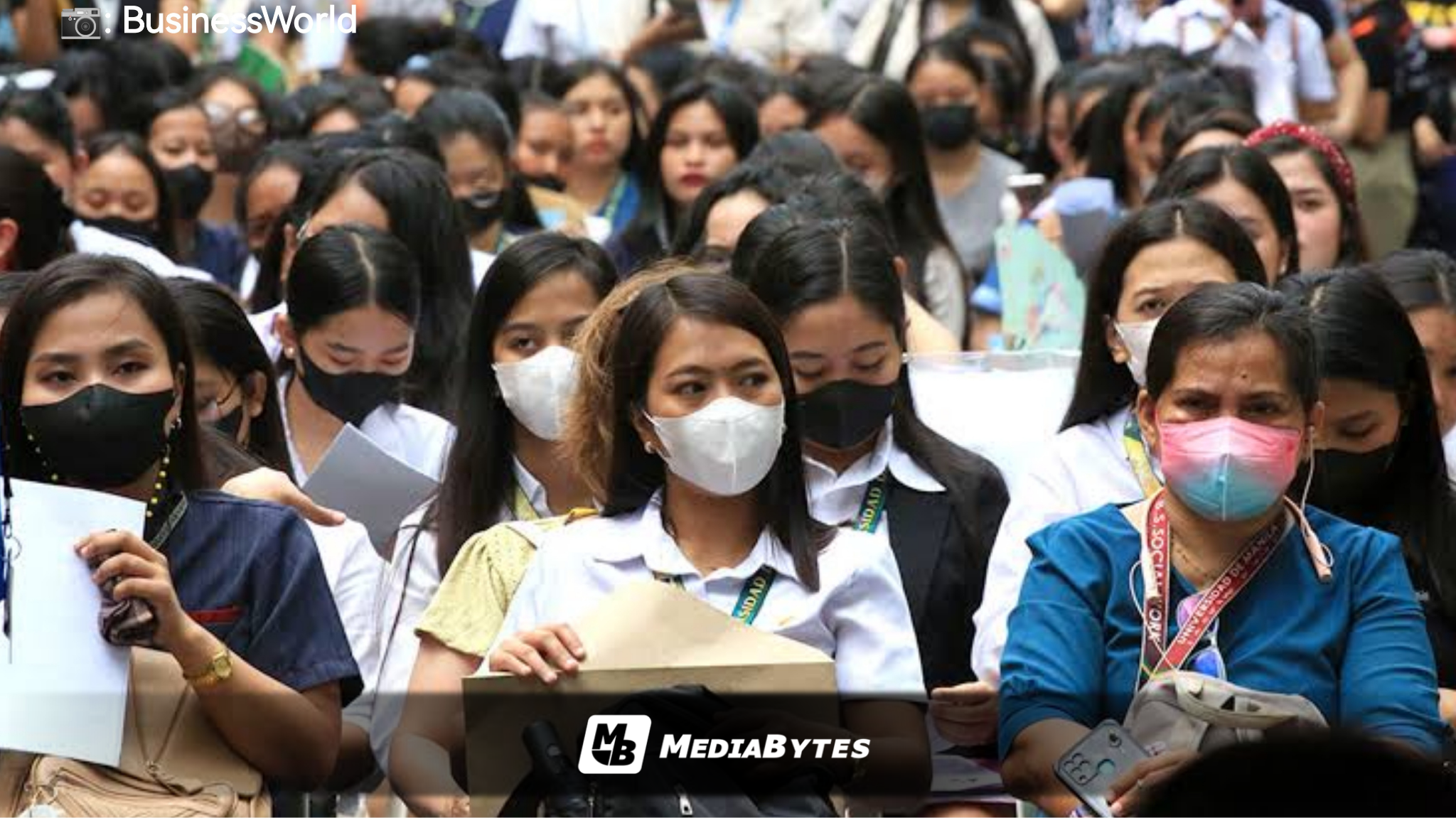
The Philippines saw a slight improvement in its labor market in June, with fewer unemployed and better job quality, according to the Philippine Statistics Authority (PSA).
In its latest Labor Force Survey, the PSA reported that the unemployment rate dropped to 3.7% in June from 3.9% in May. However, this was still higher than the 3.1% posted in June 2024.
This translates to about 1.95 million jobless Filipinos in June, down from 2.03 million the previous month, but up from 1.62 million a year earlier.
The quality of employment improved as the underemployment rate—the share of workers seeking additional hours or jobs—fell to 11.4% from 13.1% in May and 12.1% in June last year. This meant 5.76 million underemployed Filipinos, down from 6.60 million the previous month and 6.08 million last year.
The country’s employment rate rose to 96.3% in June from 96.1% in May, though slightly lower than 96.9% a year ago. The number of employed Filipinos reached 50.47 million, higher than 50.29 million in May and 50.28 million in June 2024.
Industries with the biggest employment gains in June included wholesale and retail trade (+908,000), fishing and aquaculture (+428,000), construction (+292,000), financial and insurance activities (+248,000), and human health and social work (+164,000).
Sectors that saw the largest job losses were accommodation and food service (-562,000), agriculture and forestry (-480,000), public administration and defense (-261,000), education (-255,000), and arts, entertainment, and recreation (-214,000).
The labor force participation rate slightly declined to 65.7% in June from 65.8% in May and 66% a year ago, with 52.42 million Filipinos in the labor force—the highest since April 2005.
Department of Economy, Planning and Development (DEPDev) Secretary Arsenio Balisacan welcomed the gains, saying they reflect “the impact of our sustained efforts to improve the overall business climate and create high-quality jobs.”
“These gains reflect the impact of our sustained efforts to improve the overall business climate and create high-quality jobs,” Balisacan said.
However, he noted concerns over the slight uptick in youth unemployment. “To address this, we are committed to enhancing workforce competitiveness by aligning education and training systems with industry needs,” he added.
Balisacan cited policy reforms such as the Enterprise-Based Education and Training Framework Act, the Expanded Tertiary Education Equivalency and Accreditation Program, and the Proposed Lifelong Learning Development Framework Bill as key to workforce development.
Government programs like the Special Program for the Employment of Students, the Government Internship Program, and JobStart Philippines are also being implemented to improve youth employment, alongside the Tatak Pinoy Strategy to strengthen local enterprises and attract investments.
He also stressed the need to align workforce skills with high-value sectors such as Global Capability Centers and digital services, under the Trabaho Para sa Bayan Plan—the government’s long-term strategy for inclusive, quality employment.
“We must accelerate structural reforms to make our labor market more inclusive, competitive, and resilient. Through sustained collaboration and innovation, we aim not just to create more jobs, but to sustain improvements in the lives of all Filipinos,” Balisacan said.



